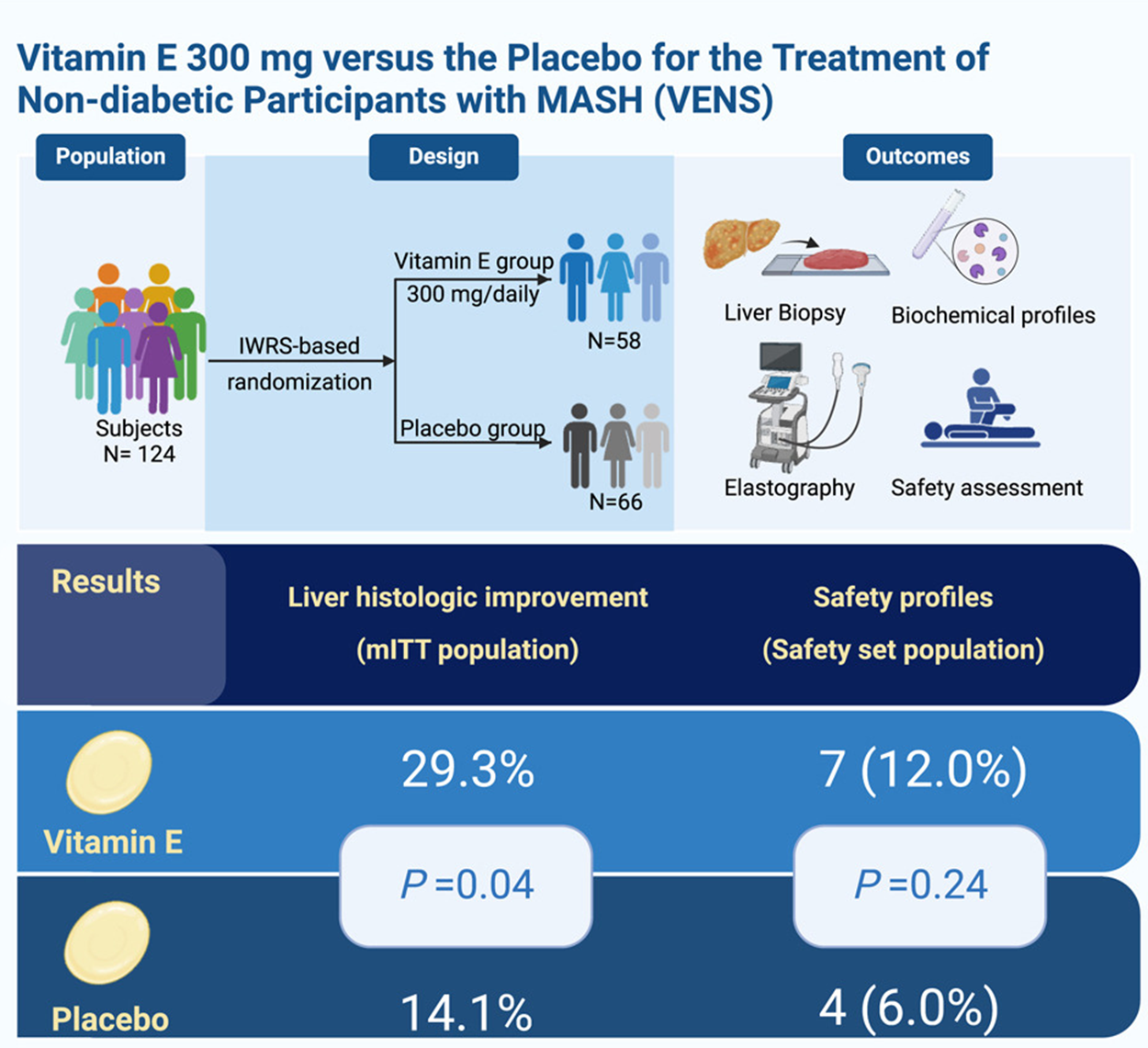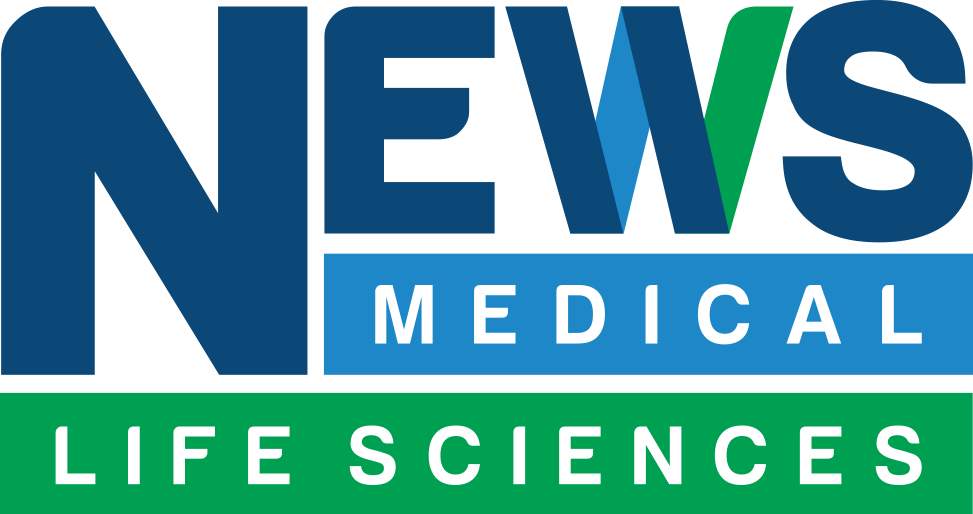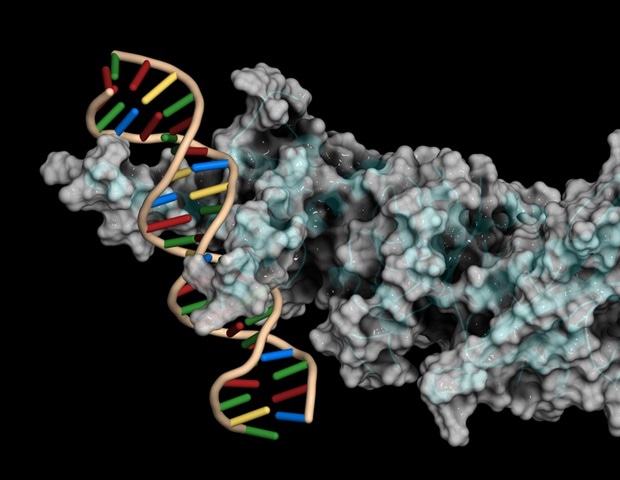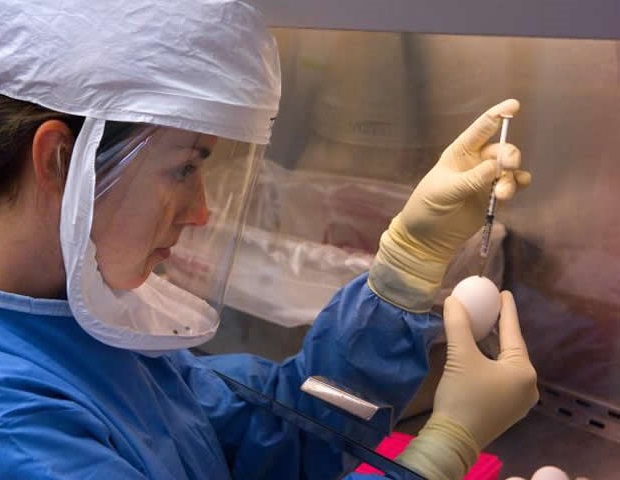New research shows that Vitamin E therapy significantly enhances liver function and reduces inflammation in MASH patients, providing a safer and effective treatment option in the fight against metabolic liver disease.

Study: Vitamin E (300 mg) in the treatment of MASH: A multi-center, randomized, double-blind, placebo-controlled study
In a recent study published in the journal Cell Reports Medicine, a group of researchers evaluated the effectiveness and safety of 300 mg Vitamin E in improving liver histology and biochemical markers in participants with Metabolic Dysfunction-Associated Steatohepatitis (MASH).
Background
Did you know that nearly 30% of the global population is affected by Metabolic Dysfunction-Associated Steatotic Liver Disease (MASLD)? This silent epidemic is increasing the burden of liver-related complications, including cirrhosis and liver cancer. MASH, the progressive form of MASLD, is characterized by hepatocellular damage and inflammation driven by oxidative stress and metabolic dysfunction. Despite lifestyle interventions, effective pharmacological options remain limited. The thyroid hormone receptor-β selective agonist resmetirom was recently approved for moderate-to-advanced fibrotic MASH, but treatment gaps remain.
Vitamin E, a natural antioxidant, has shown potential in reducing liver inflammation, yet its optimal dosing, long-term effects, and safety profile require further evaluation. Identifying a safe and effective Vitamin E dosage for MASH treatment could transform patient outcomes worldwide. Further research is needed to establish definitive treatment regimens.
About the Study
A multi-center, double-blind, randomized, placebo-controlled trial was conducted across 14 clinical centers in China. Participants diagnosed with biopsy-proven MASH were recruited and randomly assigned in a 1:1 ratio to receive either Vitamin E (300 mg per day) or placebo for 96 weeks. All participants received dietary and exercise recommendations throughout the study period.
Baseline and post-treatment liver biopsies were centrally reviewed by independent hepatopathologists blinded to treatment allocation. The primary endpoint was histological improvement, defined as a reduction in the Non-Alcoholic Fatty Liver Disease Activity Score (NAS) by at least 2 points, with no worsening of fibrosis. The study followed a modified intention-to-treat (mITT) approach, with sensitivity analyses performed to confirm robustness.
Secondary endpoints included fibrosis regression, resolution of steatohepatitis, and changes in liver enzymes, inflammatory markers, and metabolic parameters. FibroScan-based liver stiffness measurement (LSM) was also assessed to provide additional insights into fibrosis progression.
Biochemical parameters were assessed at regular intervals, including alanine aminotransferase (ALT), aspartate aminotransferase (AST), fasting plasma glucose, and pro-inflammatory cytokines (tumor necrosis factor-alpha [TNF-α] and interleukin-6 [IL-6]). Statistical analyses were conducted using SAS 9.4 and R 4.2.3, with Analysis of Covariance (ANCOVA) models used for continuous variables and logistic regression for binary outcomes. The study adhered to strict ethical guidelines, and all participants provided informed consent.
Study Results
A total of 124 participants were enrolled, with 58 in the Vitamin E group and 66 in the placebo group. Baseline characteristics, including age, gender distribution, and metabolic parameters, were comparable between groups. The mean age was approximately 38 years, with a predominance of male participants (72.4% in the Vitamin E group and 75.8% in the placebo group).
A statistically significant 29.3% of participants receiving Vitamin E experienced histological improvement, compared to 14.1% in the placebo group (odds ratio [OR]: 2.5; 95% confidence interval [CI]: 1.0-7.1; p = 0.04). Subgroup analyses revealed greater improvement among males, participants under 40, and those with baseline NAS scores of 5-8.
Fibrosis regression by at least one stage without worsening of steatohepatitis was observed in 25.9% of the Vitamin E group versus 15.6% in the placebo group, but this difference was not statistically significant (OR: 1.9; 95% CI: 0.7-5.2; p = 0.16). However, FibroScan liver stiffness measurement (LSM) showed a significant improvement in the Vitamin E group (p = 0.04), indicating potential long-term benefits despite biopsy-based fibrosis outcomes not reaching statistical significance.
Steatohepatitis resolution without worsening of fibrosis was observed in 12.1% of the Vitamin E group compared to 17.2% in the placebo group (OR: 0.7; 95% CI: 0.2-2.0; p = 0.43). Despite this, significant reductions in steatosis (p = 0.01), lobular inflammation (p = 0.04), fibrosis score (p = 0.04), and total NAS score (p = 0.03) were observed in the Vitamin E group.
Liver enzyme levels improved significantly in the Vitamin E group, with ALT and AST reductions of 20% and 18%, respectively. Serum pro-inflammatory cytokine levels, including TNF-α and IL-6, also showed significant reductions in the treatment group compared to placebo (IL-6, p = 0.04).
Safety and Additional Findings
A comprehensive safety analysis revealed no significant differences in adverse events between groups. The most commonly reported events were mild gastrointestinal symptoms, occurring in 12% of the Vitamin E group and 6% of the placebo group. Importantly, no participants developed prostate cancer, cardiovascular events, or hemorrhagic stroke during the study, addressing previous concerns regarding high-dose Vitamin E supplementation.
Exploratory analyses indicated that Vitamin E was associated with improved metabolic parameters, including fasting insulin and homeostasis model assessment for insulin resistance (HOMA-IR). However, no significant differences were found in lipid profiles or body mass index (BMI) between groups.
Genetic analysis of the participants revealed a predominance of the HP 2-2 haptoglobin genotype, which has been linked to oxidative stress regulation. While preliminary, this finding suggests a possible genetic influence on Vitamin E responsiveness in MASH patients.
Sensitivity analyses confirmed the accuracy of the findings, reinforcing the potential of Vitamin E as a promising treatment for MASH.
Conclusions
The study demonstrated that a 96-week treatment with 300 mg of Vitamin E significantly improved liver histology and reduced inflammatory markers in participants with biopsy-proven MASH. While fibrosis regression did not reach statistical significance, improvements in steatosis, lobular inflammation, liver stiffness, and enzyme levels suggest a potential therapeutic role for Vitamin E.
The treatment was well-tolerated, with no major safety concerns identified. Notably, concerns about prostate cancer, cardiovascular risk, or hemorrhagic stroke linked to high-dose Vitamin E were not observed in this trial.
These findings have significant implications for individuals at risk of liver disease, providing a non-invasive, accessible treatment option. At a community level, improved liver health could reduce healthcare burdens, while globally, addressing MASH effectively may help curb the rising incidence of liver-related complications.







